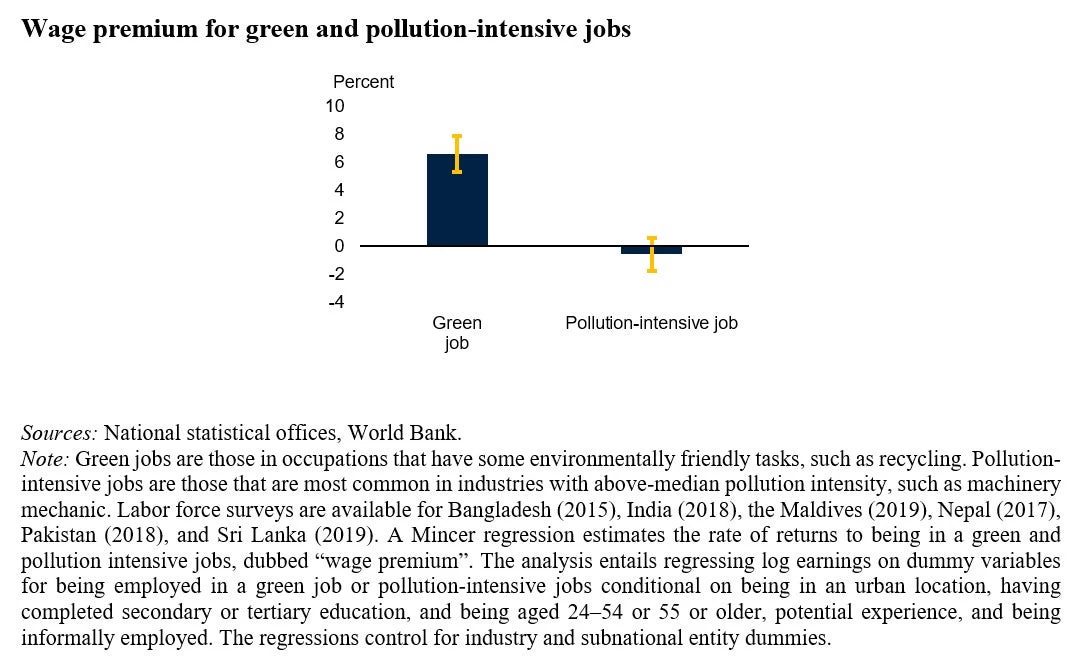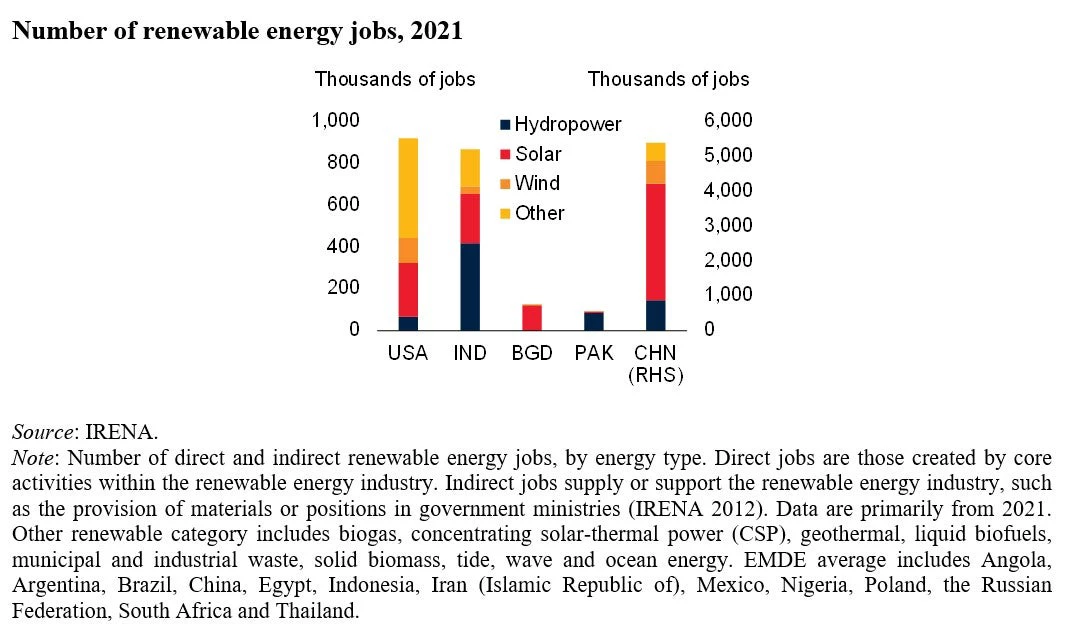 Picture of women learning to make solar lanterns in Rajasthan, India.
Picture of women learning to make solar lanterns in Rajasthan, India.
South Asia’s transition away from fossil fuels will have significant labor market impacts, which could leave many workers stranded in lower-wage jobs in declining industries. In most South Asian countries, pollution-intensive jobs outnumber green jobs. Pollution-intensive jobs are concentrated among lower-skilled and informal workers whereas green jobs tend to be held by higher-skilled, better-paid, and formal-sector workers. A wide range of policies will be needed to facilitate the necessary adjustment in labor markets while protecting vulnerable workers. These include the provision of better access to high-quality education and training, finance, and markets; measures to facilitate labor mobility; and the strengthening of social safety nets. Read more in the World Bank’s latest South Asia Development Update, Toward Faster, Cleaner Growth.
Most countries in South Asia have more pollution-intensive than green jobs
In all South Asian countries other than India, pollution-intensive jobs outnumber green jobs. Across South Asia, 2-11 percent of workers were employed in green jobs, while the range was narrower for pollution-intensive jobs, at 6-11 percent. The vast majority of jobs are classified as “pollution-neutral”—neither green nor pollution-intensive.
Pollution-intensive jobs are more geographically concentrated than green jobs
Workers in pollution-intensive jobs are concentrated in a few states and districts, while workers in green jobs are more geographically dispersed. Pollution-intensive jobs accounted for 10 percent or more of employment in two states or union territories in India, which also had above-average poverty; three provinces in Pakistan; and three provinces in Sri Lanka. Green jobs were more dispersed: across the whole region, there were only four states with a share of green jobs above 10 percent, all of them being in India, with two also heavily reliant on pollution-intensive jobs.
Workers in green jobs are better educated and less likely to be informal
In the region, highly educated and formal workers were generally more likely to be employed in green jobs. Conversely, workers in pollution-intensive jobs were significantly less educated and more often informally employed. The green transition requires investments that will likely produce a skill-biased shift in the composition of jobs and lift labor productivity, including by encouraging more firms and workers to operate in the formal sector.
Workers in green jobs earn more than the average worker
Workers in green jobs earn more than other workers. Even after controlling for their higher education and formal employment arrangements, workers in green jobs earn about 7 percent more than other workers. Conversely, workers in pollution-intensive jobs received almost 10 percent lower wages than other workers. The characteristics of workers in pollution-intensive jobs suggest lower-paid, lower-educated, informal workers are at risk of being stranded. Policies that facilitate labor mobility—both geographically and across occupations—into more productive employment can provide win-win solutions for workers while meeting the region’s greenhouse gas emissions goals.
South Asia has strong potential for employment in renewable energy
South Asia has strong potential for renewable energy. The number of jobs in the region related to the production of renewable energy is already almost as high as in the United States, although both are far lower than in China. Most of the region’s renewable energy jobs are in India’s and Pakistan’s hydropower sectors, but there is significant potential for employment growth in the region’s wind and solar energy sectors.
This blog is part of a series on the World Bank's latest South Asia Development Update, Toward Faster, Cleaner Growth.







Join the Conversation